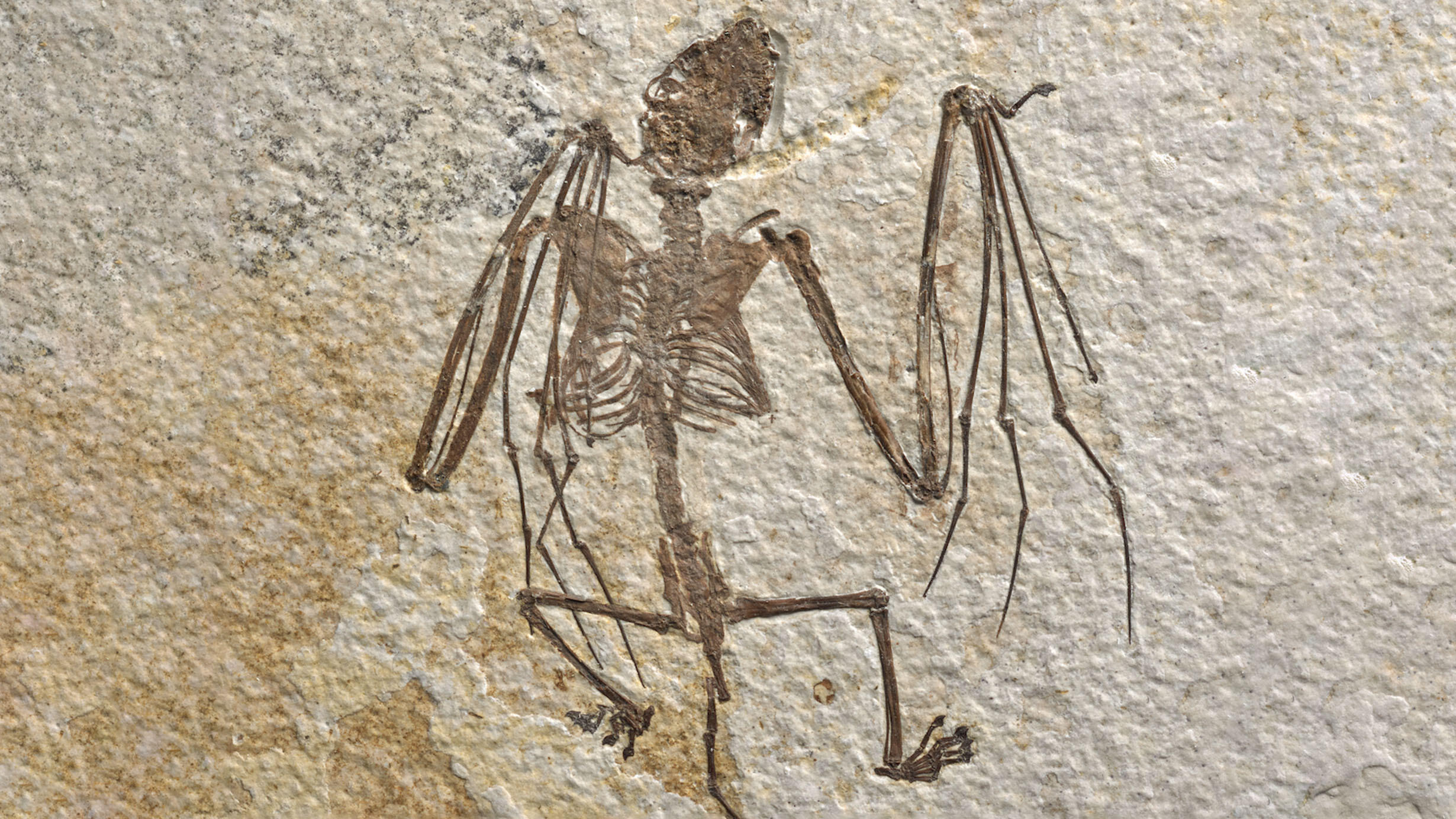 Photo of a newly described bat skeleton representing Icaronycteris gunnelli. This specimen is the holotype, the name-bearing representative of a new species, and is in the American Museum of Natural History’s research collections.
Photo of a newly described bat skeleton representing Icaronycteris gunnelli. This specimen is the holotype, the name-bearing representative of a new species, and is in the American Museum of Natural History’s research collections. Scientists have been uncovering ancient bat fossils in Wyoming’s Green River Formation, a notable fossil deposit from the early Eocene epoch, for several decades. The fossils were generally thought to represent just two species, the first of which was identified and named in 1966.
Museum Curator Nancy Simmons, who helped describe the second species in 2008, had her doubts. “I always suspected that there must be even more species there,” she says.
Learn more about Curator Nancy Simmons’ fieldwork searching for bat microfossils in Colombia in this video.
So did researchers at the Naturalis Biodiversity Center in Leiden, Netherlands, who recently began a closer study of the bat species that had been identified in 1966, named Icaronycteris index.
“Paleontologists have collected so many bats that have been identified as Icaronycteris index, and we wondered if there were actually multiple species among those specimens,” says Tim Rietbergen, an evolutionary biologist at Naturalis who began collecting measurements and other data from museum specimens.
As part of Reitbergen’s work with the Museum, he learned about a new skeleton—an exceptionally well-preserved fossil that had been collected by a private collector in 2017 and purchased by the Museum.
Comparisons with the other fossils in Rietbergen’s dataset showed the 2017 specimen represented a new species. A second fossil skeleton, which had been discovered in the same quarry in 1994 and is in the collections of the Royal Ontario Museum, was also confirmed as the same new species, named Icaronycteris gunnelli in honor of the late paleontologist Gregg Gunnell. The study describing the new species is published today in the journal PLOS One.
Although there are fossil bat teeth from Asia that are slightly older, the two I. gunnelli fossils date back to 52 million years ago, representing the oldest bat skeletons ever found.